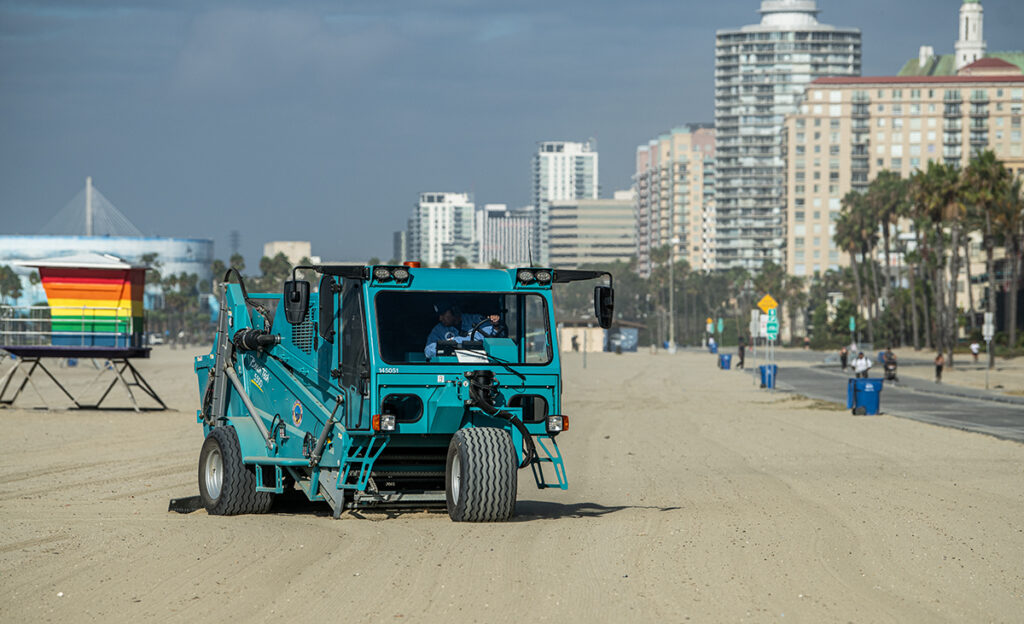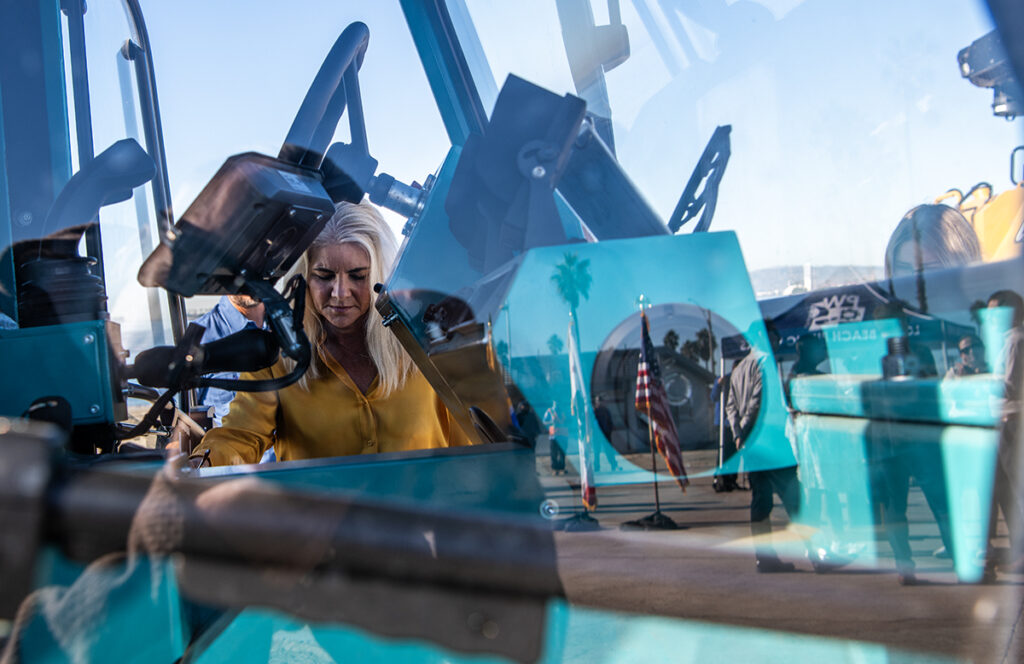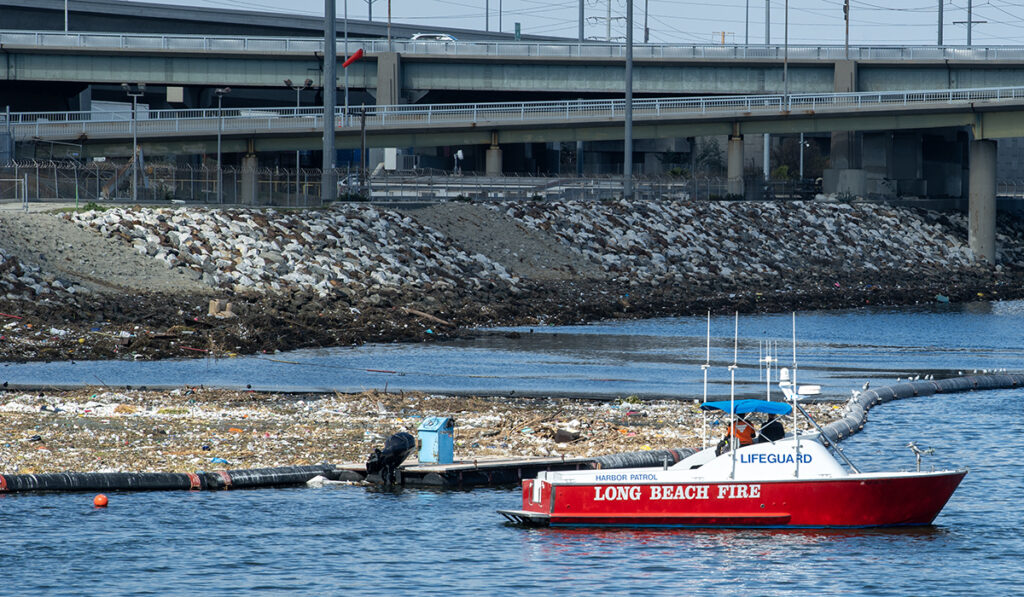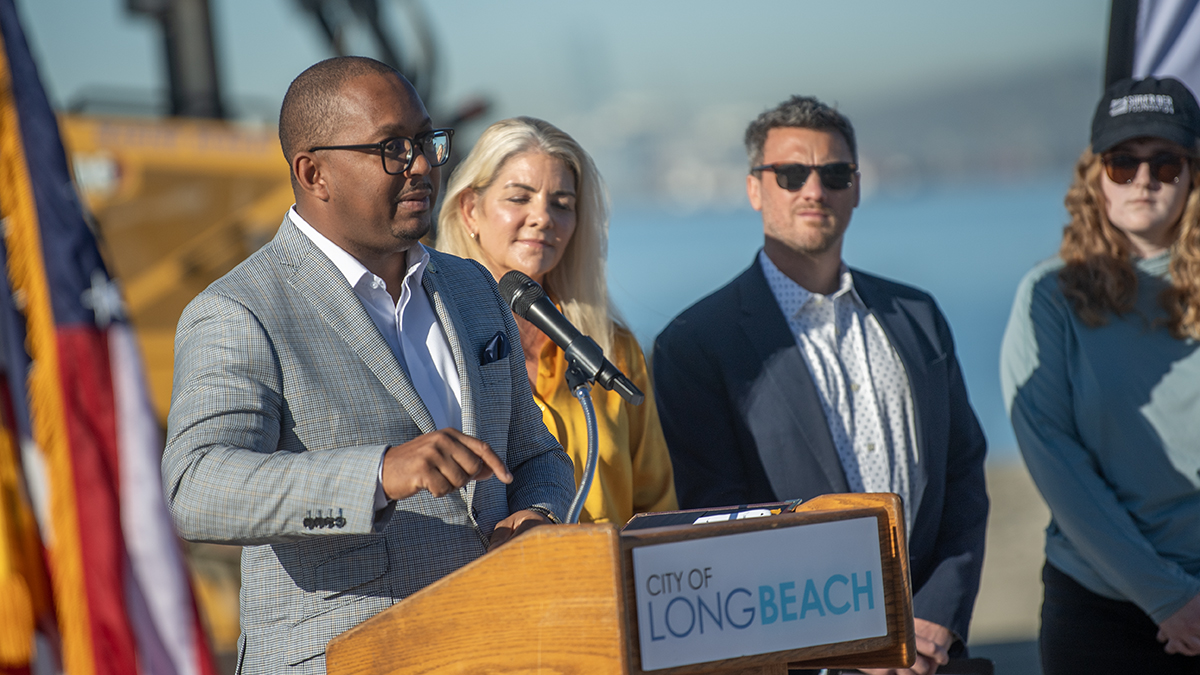Beset by demands to take stronger action, Long Beach unveiled Wednesday a glimpse at its plans to curb the amount of trash going into the Los Angeles River and washing ashore on its surf line.
It’s a far-reaching strategy, one that calls for stricter enforcement on the 17 cities that bank the 51-mile river, and more money for Long Beach to cover its costly burden of cleaning up debris.
According to the Public Works Department, the city has collected more than 12,500 tons of trash from 2020 to 2024, which cost a staggering $12.3 million. In the most recent fiscal year, the city paid seven times more for labor and materials than four years prior — an average $1,000 per ton of trash removed from the shoreline, according to previous reporting by the Long Beach Post.
Kathryn Dressendorfer with the Surfrider Foundation says their volunteers have recently collected three tons of trash at the Belmont Pier and along the city’s beachline. In a single day, their crews pulled out nearly 1,300 pounds from the San Gabriel River, whose watercourse ends near the city’s eastern marina.
Styrofoam cups, motor oil containers and plastic bags are common flotsam.
The surge in trash has intensified worries among civic and environmentalist leaders who fear that diminished water and beach quality — and the rising expense to remedy it — takes its toll both on the environment and economy, and threatens the health of swimmers as well as marine and freshwater ecosystems.
“This beach is a part of our identity, of who we are as a city,” said Mayor Rex Richardson. “Every year, thousands of families come here to swim, to gather, to celebrate and to make memories.”

Officials say they will make arguments for stricter enforcement through the L.A. Regional Water Quality Control Board, which is in the final months of negotiations over new policies for “nonpoint trash,” or litter that enters directly into the river without a specific origin.
As the agency charged with enforcement for river pollution, the control board previously set out to eliminate all waste along the blighted watercourse by 2016. But that goal proved unfeasible, despite millions spent by the 53 cities in the greater watershed to install catch basins and improve storm drains.
In 2020, the board established a conditional waiver that paused penalties for errant cities. That waiver expired in September, with new rules now under consideration. One official said Wednesday they will finish their public comment period on Nov. 6, with a board vote to be held on Dec. 18.

Long Beach leaders will also push the state legislature to recognize that the river — and those cities around it — deserve access to grant money through California’s Proposition 4 Bond, meant to pay for climate justice projects.
One official mentioned a state abatement account, built up through fines on violating cities, that arguably could be used for local efforts, as well as cost-sharing agreements with neighboring cities.
“Because the burden of cleanup cannot just fall on Long Beach,” Richardson said.
Officials also pointed toward the idea of purchasing and installing a trash capture system at the mouth of the river.
One person familiar with the matter said the city is leaning toward additional trash-catching booms to join the existing county boom at the mouth of the river, just below the Ocean Boulevard bridge.

The 25-year-old boom captures a thousand tons of rubbish a year but is often overwhelmed during heavy rains, sending its collections into the harbor.
It’s potentially a more popular solution as opposed to a trash interceptor or barge, which can be costly, inefficient and run the risk of being sent adrift in a heavy storm.
Interim Public Works Director Josh Hickman said no decision has been made, and they are open to public input. Any system, they hope, will be installed ahead of the 2028 Olympics, at an expected cost of $4 to $6 million.
The Public Works Department will host a virtual meeting to discuss its options on Nov. 12, from 6 p.m. to 7:30 p.m. For more information, click here; register for the meeting here.

